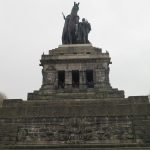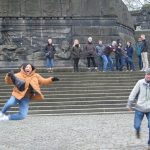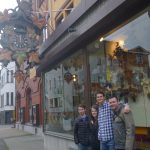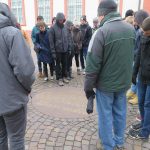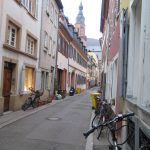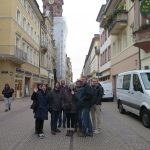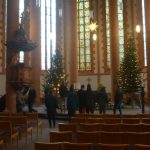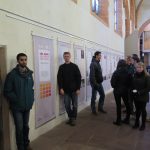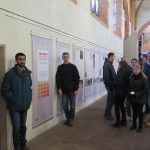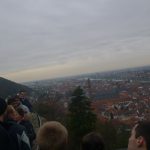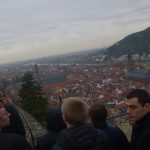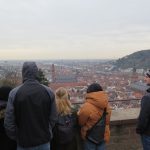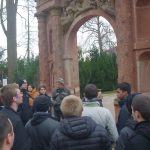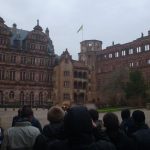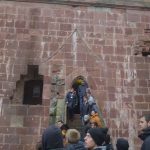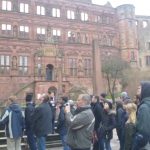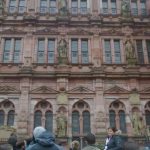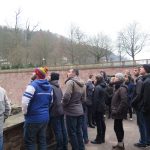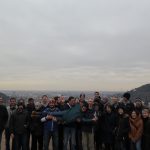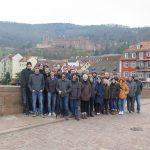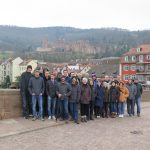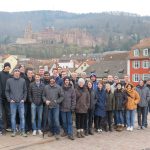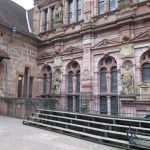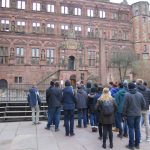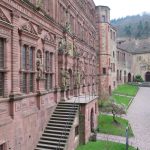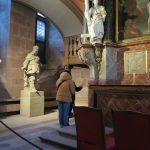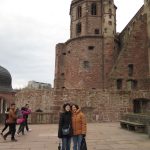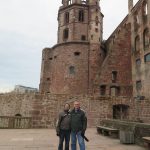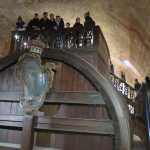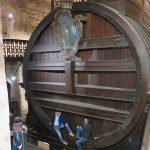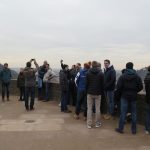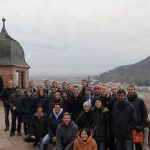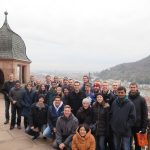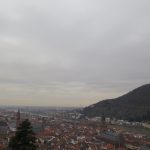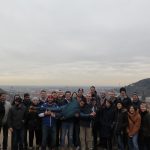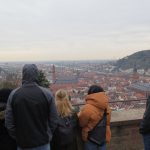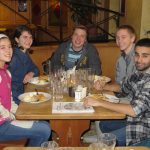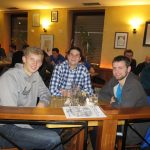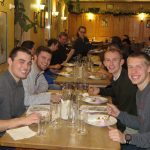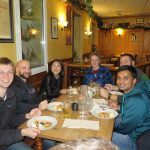The cemetery was located in Hann, Luxembourg City, Luxembourg. The cemetery has 5,075 American soldiers buried there, most of whom died in the Battle of Bulge. The person who showed us around the cemetery was Jennifer Roman.
The tour started with her pointing to two huge maps on walls, of the area of the battle field with arrows showing the directions of the routes Allied forces took and the routes Nazi forces took to launch the surprise attack for the battle of Bulge. She talked about the the strategies and gains of the two sides and about the bravery of American soldiers, for example, in one scenario sixteen U.S. soldiers pushed back an offensive of eight hundred Nazi soldiers.
After this, she went on to tell the individual stories of a few soldiers and pointed out the diverse background of the soldiers buried there. She did this by walking to each person’s gravestone and talked about them by showing their picture.The people she talked about included a Jewish , an African-American, a German born soldier and an Army nurse, the only female in the whole cemetery. The stories of these individuals not only gave a face to them but also helped us to realize that they could have been anyone of us, with unique interests and backgrounds attending to their country’s call.
Towards the end of the visit, it was a very special moment because it started to get dark and she asked the students to help in lowering the two U.S. flags in the cemetery with the Taps playing in the background.
Day: January 16, 2018
Reims Cathedral
After leaving Paris in the morning we headed to the city of Reims to attend the Sunday service at the famous Notre-Dame de Reims (Our Lady of Reims), also called the Reims Cathedral. This was a very important place because it was the place where all the coronations of the kings of France took place. The most notable of whom was probably Charles VII as the legendary Joan of Arc won the Hundred Years War for him. There was a statue of Joan of Arc in front of the cathedral in honor of her.
When we reached the cathedral, I personally thought it was a tad more magnificent than the Norte-Dame of Paris with all its gargoyles and sculptures adorning its walls.
The cathedrals looked similar in terms of architecture, but the the one in Reims seemed to have more majestic gargoyles and more sculptures adorning its walls.
Then we proceeded to enter the cathedral, and it was just gorgeous inside from the beautiful stained glass windows to the huge stone columns supporting the structure. The service started at ten in the morning and was completely in French and was probably the first Catholic service I attended. The service seemed very organized and traditional. The French songs sounded very pretty and my basic knowledge in French helped me to join in on a few of their lyrics by reading it off the song sheets.
Koblenz, Heidelberg, and Hockenheim Germany
Today was an exploration of the Rhine River region of Germany, especially the area known for its castles. We left the city of Trier in the morning and arrived at the city of Koblenz. Koblenz is know for many things, but what we were most interested in was the Deutsches Eck, also known as the German Corner. Koblenz is located where the Mosel River joins with the Rhine River. At that intersection, a humongous statue has been erected to William I, the one who unified Germany in the 1800s. We were also hoping to use public restrooms nearby, but they were closed, so we continued along the Rhine River until we arrived at the town of St. Boar which had public restrooms open.
We then headed to Heidelberg, the location of the ruins of the Heidelberg Castle and the location of the Holy Ghost Church. The writers of the Heidelberg Catechism served the ruler in the castle and worshiped in the Holy Ghost Church. Since 2013, a set of commemorative plaques have been on display inside the church about the catechism. After figuring out our way around town, the students headed off for a brief lunch. Then, we spent a few minutes inside the church before going up to the castle on a guided tour. After our time in Heidelberg, we headed to the town of Hockenheim where we checked into our hotel and went to a restaurant for supper.
The Sacred Heart of France
On the edge of the city of Paris, up a slope and away from the bustle of downtown, the basilica of Sacre Coeur rests. It watches over the streets of Paris from its vantage point and from there one can watch as well. Sacre Coeur stands as an oasis from the dynamic metropolis. As far as French cathedrals go, it is somewhat modest, though a step through the doors still brings a view of grand, high ceilings and ornate decoration. It is to this church that the oppressed are encouraged to come.
Sacre Coeur was built by the French monarchy to appease the people of Paris after particular brutality involving the execution of the Archbishop of Paris. Translated as “Sacred Heart”, Sacre Coeur calls to come and to pray for the sacred hearts of those who are oppressed. It promises sanctuary in a time of trouble and rest in a life of pain. Before the doors and on the square, people danced to music and played with their pets, but inside the walls was still.
I was struck by the sacredness that can still be felt in Sacre Coeur. Tragically, most of the cathedrals and churches we visited in Paris felt only like spectacles; a sight to see from a bygone age. The cathedral of Norte Dame imposed its impressiveness, but it is only the remains of a once holy kingdom. The colorful Sainte Chapelle is a beautiful corpse of the Christianity once found in France. No more do people worship in these structures; no more is their life fulfilled.
This, to me, was the most wonderful part of Sacre Coeur. It may not be a place of Christian worship, but it still sees its purpose somewhat fulfilled. People still come and pray in the holy halls for the oppressed, and maybe some of them find comfort.

